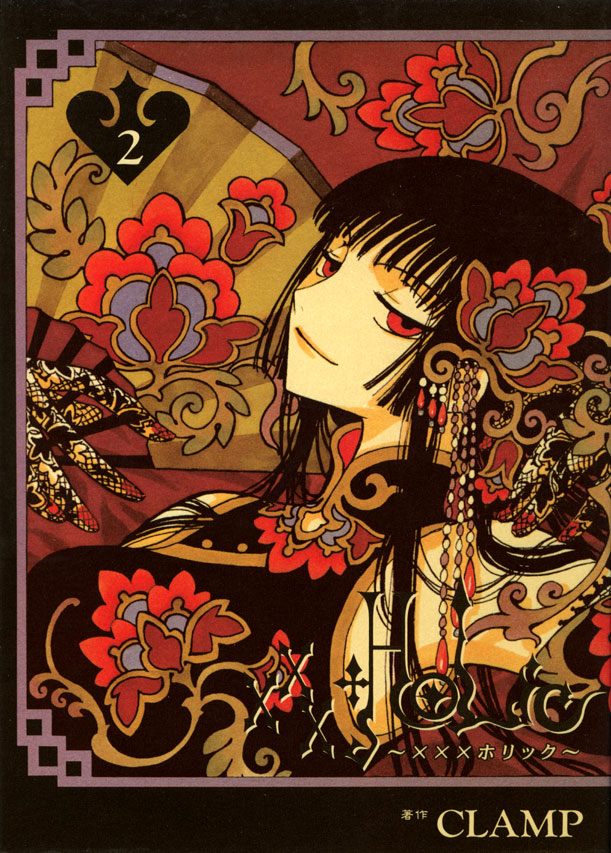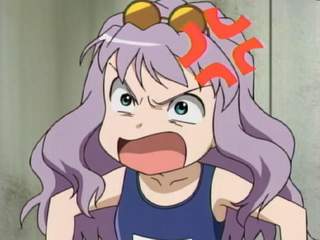History of Manga - In A Nut Shellright, right, I know this is long overdue, but here's the Introduction to my research(can I call this a mini-thesis?)
Manga (Japanese Comics) have been around a long, long time - in fact, it started in 16th century Japan. In this long, long time, this simple form of telling stories through black and white drawings on a piece of paper has boomed into a 14 Billion USD industry worldwide.
 (Image - the Great Wave of Kanaga, one of the first Manga)
(Image - the Great Wave of Kanaga, one of the first Manga)Manga started life as dynamic drawings by a rebellious artist called
Hokusai. He broke conventions of the typical woodblock drawings back then. He went against the rigid styles of the ukiyo-e drawings of then and drew according to how his brush moved across the empty paper - thus creating the Manga style, Manga meant "Whimsical Pictures"
 (Image: Comic Strip by Ippei Okamoto, one of the early Mangakas/Manga Artist )
(Image: Comic Strip by Ippei Okamoto, one of the early Mangakas/Manga Artist )Manga remained that way til the 20th century - when Japan became more open to the world. De to this, the Japanese started picking up new things from other countries, especially America. One of these new and marvelous things were comic strips found in most Western newspapers. The Japanese adopted this humorous outlet into their lives and began making it their own - even using it to spread propaganda messages among the masses during wartime.
Then came along the Godfather -
Osamu Tezuka. This man single handedly transformed the Manga industry during the World War Two into the endearing and inspiring medium it is today. He broke the tradition of stagnant frames and bland drawings of the old Manga and re-shaped it to look like the dynamic black and white movies of then (kind of like Hokusai, eh?). He wanted his readers to really EXPERIENCE the story, to be a part of the adventure...something previous Manga failed to bring.
Needless to say, the public were blown away with this new style.
His breakthrough Manga,
Shin Takarajima (New Treasure Island - see image below), sold 400,000 copies in its first printing alone.
 (Image - The Breakthrough Shin Takarajima /New Treasure Island - note how incredibly cinematic this strip is compared to the previous comic strip...)
(Image - The Breakthrough Shin Takarajima /New Treasure Island - note how incredibly cinematic this strip is compared to the previous comic strip...)Then, the Godfather of Modern Manga laid the foundations of the Manga industry since - specifically, the different genres of Manga. Two main genres of the industry include the Shojo genre - featuring romantic tales, love stories for girls - and the Shonen genre, which had adventure, action and good-old-fashioned butt-kicking. ,
From the Manga came its animated sibling - Anime. Both industries are inseperable now, since most big name Mangas, such as DragonBall and Bleach, will get animated inevitably.
 (Image - A page from Dragon Ball's Manga - note the improved cinematographic quality)
(Image - A page from Dragon Ball's Manga - note the improved cinematographic quality) (Image - The Cast of the Dragon Ball Anime)
(Image - The Cast of the Dragon Ball Anime)And as time goes on, Manga and Anime continue to grow. Notably, today's Manga and Anime are spreading across the globe, gaining lots of love wherever it goes, even in the West.
Kind of ironic isn't it? It was the Western comic strip that inspired the evolution Manga in the first place.
 (Image - Bleach, the Manga)
(Image - Bleach, the Manga) (Image - Local Bleach fans Cosplaying / dressing up as their beloved character)
(Image - Local Bleach fans Cosplaying / dressing up as their beloved character) (Image - And LOTS of American Bleach Cosplayers)
(Image - And LOTS of American Bleach Cosplayers)So, what's up with all this love?
As a fan, Mangas and Anime have offered me a way into a better world - a world where anyone can chase their dreams just by giving it your all, and anything
really is possible.
A World where friends are really
nakama, friends you can bet your life to always remain by your side, to chase dreams with.
A world where the mediocre can rise by believing - where the outcast orphan can rise to bring entire nations to stop warring each other, and find the family he never had among friends (
Naruto); where a normal, everyday girl can find herself among Gods and Demons (the Oscar winning
Spirited Away); even where the ugly duckling of her school can find love with an unexpected prince charming (
Ouran High School Host Club).
Mangas also brought that world back here to reality, for as a Manga fan, I can go anywhere in the world and find other Manga lovers out there whom I can relate too.
This industry has remained a pillar of strength and inspiration to its fans because of simple stories - powerful yet simple stories that every and any laymen can immerse into. And grow with.
Perhaps, more than any other story telling industry out there, the Manga industry is very, very involved with its fans. In Japan, huge Manga/Anime corporations hold multimillion dollar events just for the fans - even showcasing their favorite Manga/Anime voice actors, or even getting real life actors to play their parts!


(Image - Bleach Anime's Characters, and their actors. Bloody uncanny resemblance...click
here for info)
These corporations also hold off suing fans that breach copyrights. Fans that get so madly in love with the characters of their favorite Manga/Anime they actually draw and SELL their OWN VERSIONS of the story to other fans. Fan drawn Manga, called Doujinshi, are seen as LEGAL despite their obvious copyright infringement. That's how much love the fans get.

(Image - Another Big Name Manga, Naruto - Click
here to head to a Naruto fansite)


(Images - ...and SOME of the MILLIONS of
Naruto Doujins out there!)
So, I've decided to investigate this crazy, symbiotic relationship between the producers and the fans - Who has more influence in shaping this industry? The Producers? or the Fans? Mainstream or Independent?
We shall soon see.
and... if I still haven't drowned you with History lessons on Manga, get more
Here and
Here...and
Here


































